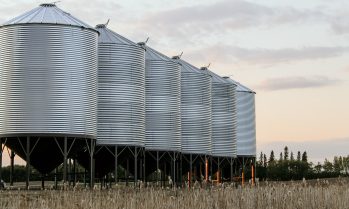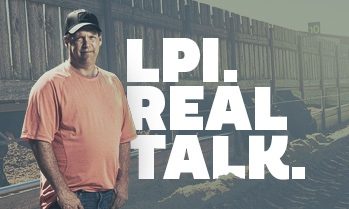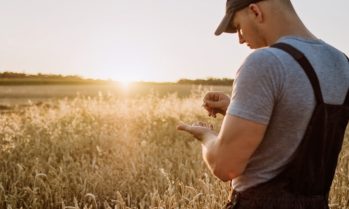AgriStability August 2021 Industry Advisory
Interim Benefit
The federal and provincial governments have agreed to increase the 2021 AgriStability interim benefit payment percentage from 50 per cent to 75 per cent for Saskatchewan producers. The quickest way for producers to access funding through the AgriStability Program is the interim benefit. The interim benefit provides the opportunity for producers who are enrolled in AgriStability to access a portion of their benefit early. The interim benefit is based on the estimated margin decline or loss for the year compared to the farming operation’s reference margin. The decline must be at least 30 per cent below the reference margin to access a payment.
Whether it is the impact of having to reduce livestock inventory, purchase additional feed, or substantially reduced yields because of the dry conditions, accessing the interim benefit is a way to receive funding quicker. Please remember the interim is an estimate, so there is the potential for calculations to under or overestimate the impact of dry conditions. Circumstances and conditions can change quickly, impacting the financial success of the farming operation.
Please remember, producers that receive an interim benefit payment must submit all final program forms by the required deadlines.
If you have questions about the interim benefit, please call the AgriStability Call Centre or visit any of our 21 customer service offices across the province.
Feed Shortage
Accessing additional feed has become a large concern for many livestock producers in Saskatchewan. Feed shortages are making it difficult to source forage and the price for forage is rising. The AgriStability Program includes additional feed expenses in a participant’s benefit calculation.
Buying Feed
Purchasing feed is an allowable expense for AgriStability. Whether it is having to buy pellets, hay or additional feed grain for livestock, the AgriStability Program will include additional feed expense in the benefit calculation.
Standing Hay
Neighbours are working together to address feed concerns in the province. In situations where producers are buying and then baling standing hay, greenfeed or silage from another producer, that expense is allowable for AgriStability. When reporting this expense, the producer will need to identify the volume of feed that was acquired and the associated cost for the feed. The producer can also claim the additional fuel expense used to cut, bale, silage and transport the forage.
Please remember “rent” is not an allowable expense for AgriStability. As a result, when purchasing standing hay or cereal crop for forage, the volume of feed and the cost for production needs to be clearly indicated when the AgriStability forms are completed and submitted.
Livestock Grazing
AgriStability provides flexibility for producers needing to access additional pasture for their livestock. To be an allowable expense for the AgriStability Program, accessing additional pasture needs to be conducted through a “custom grazing” arrangement. Land rent or pasture rent is not allowable.
To qualify as a “custom grazing” arrangement, the producer would have to show that the custom grazing operator (producer or community pasture) assumed responsibility for the livestock while they were grazing, along with reporting the fees charged for grazing ($/head cost or $/head/day arrangement). The expense should be reasonable for the cost of the feed consumed. SCIC may request a copy of the contractual agreement to verify the expense.
Hauling Water
AgriStability can also help cover some of the cost of hauling water to livestock. The additional expense a producer incurs on their own to acquire and transport water to their livestock is an allowable expense. This includes the fuel to haul the water and if there is a cost to purchase the water.
Livestock Sales
Some producers may have to reduce the size of their livestock herd due to dry conditions. In these circumstances the AgriStability program will not penalize producers for this management decision. Normally, when there is a substantial change in the size of a farming operation, a structural change calculation is applied to ensure the current size of a farming operation is measured against a farm history that is relative to the new structure of the operation. In disaster situations, structure change calculations can be waived, as the change to the size of the farm was a result of extraordinary circumstances. By waiving the structure change, the AgriStability Program will more accurately reflect the impact of the dry conditions on the farming operation.
Buying Out Contracts
Due to the reduced production from the hot and dry conditions, there are producers concerned about being able to fulfill their commitments on forward contracts. In those situations where producers will not have enough production to meet their forward contract requirements, the cost of having to buy-out the shortfall with the grain company can be included in a producer’s AgriStability expenses.
Keep in mind that for the expense of buying-out the contract to be considered allowable it will need to be reasonable for the farm. The forward contract would have to be for a commodity and production amount that could have reasonably been produced by the farm.
Crop Acres Turned to Forage
If a producer has made the decision to use their crop for forage, instead of taking it to harvest, AgriStability will require the change in production to be identified when completing the program forms. The reason AgriStability needs this reported is to recognize the dry conditions the farm was facing and accurately determine the impact of the change in use of the crop for the producer’s file.
The producer should ensure they note the number of acres for the crop that was intended for harvest, but due to disaster circumstances was turned to forage. The production of the crop would be listed as zero. If the crop was turned to greenfeed, the producer would indicate the greenfeed production from the crop.
For example, a producer seeded 50 acres of barley, but due to dry conditions the barley was unlikely to produce an acceptable yield. The producer decided to use the barley for greenfeed and all 50 acres were cut, and 40 bales were produced. The producer would report 50 acres of barley with zero production, and ending inventory, and include code #5562 Greenfeed with zero acres and 40 Large Bales produced. The amount remaining on hand at the end of their fiscal year is reported in ending inventory.
We’re Here For You
Should you have questions about the AgriStability Program or how the impacts of dry conditions are treated by the Program, please contact us. We will work with you to provide the Program support you need during these challenging times.









